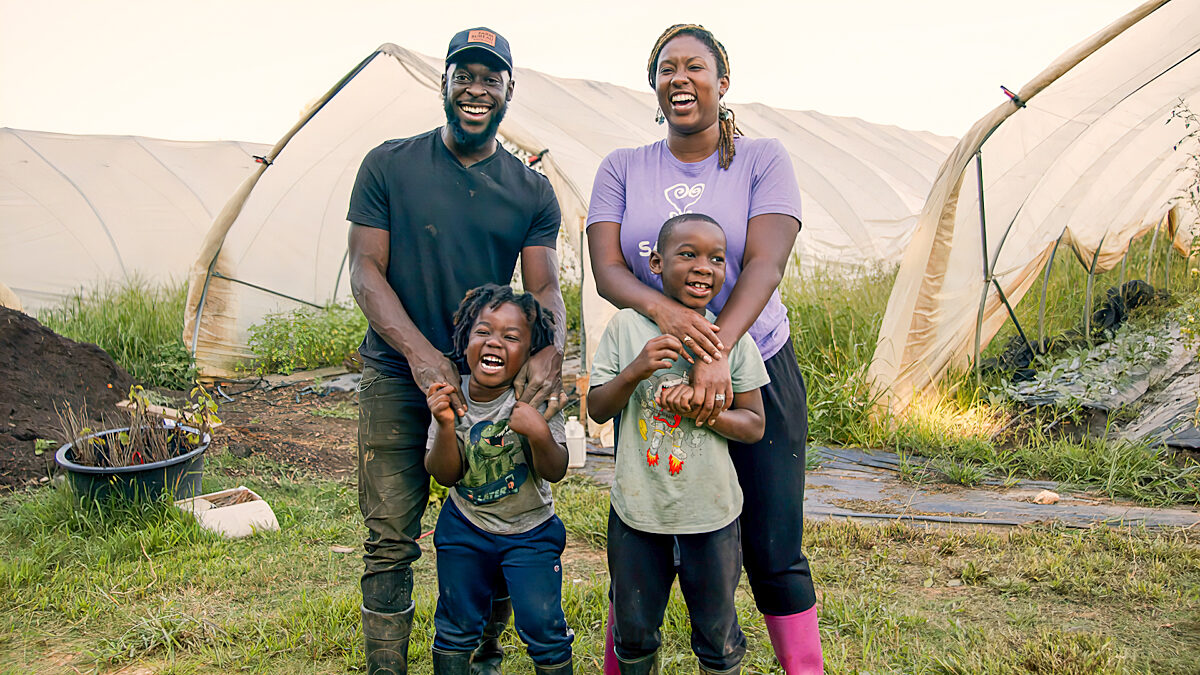Farmers Do More than Feed the World
Guest Author
Special Contributor to FB.org

photo credit: AFBF Photo
Guest Author
Special Contributor to FB.org
We 're probably all familiar with the phrase, "Farmers feed the world." And, yes, farmers truly do feed the world. Some from a very small-scale farm to provide for their own family or neighbors and others for larger markets near and far, but the phrase itself has started to irritate me. It is just so cliché and doesn 't nearly cover all that agriculture is about. On our family farm, we do so much more than feed the world.
Now, let me explain. Yes, my farm grows crops and some of those crops are made into food products such as bread, tofu, soy milk, wheat cereal flakes and refried beans. But that is not all. Much of our crops are used to make things like ink, insulation, crayons, carpet, livestock feed and ethanol. Not all of what is grown on my farm and many other farms solely provides a commodity that is used as food—food that is used to feed a growing population here in my small rural town and places all over the world.
So what do we do on our farm besides grow food, livestock feed, soybeans for insulation and crayons, and corn for ethanol? We analyze the soil looking for its specific nutrient values; we enrich our knowledge base by attending classes; we shovel and scoop; we climb and sweep; we plan and evaluate; we repair; we research new seeds available and weed issues; we plant and harvest, and nurture and protect the plants that grow in our fields. We make decisions every minute of every day to be sustainable and leave this third-generation farm better for the upcoming generations.
On our farm we draw out an outline, perhaps one would say the frame of a puzzle with the squiggly lines defining interior pieces. Each one of those interior pieces is a plot of land we farm. Then we identify soil types and nutrient levels in various places on each field, layering one level of information onto the base of the puzzle, piece by piece. Then we take the available seed varieties, match them to the soil type, weed and disease pressure, and any insect issues. (And yes, we do use some seed that has been researched and developed to be resistant to pests and weed controls to meet our needs, raise a healthy crop and attempt to minimize applications of substances aiding in growing healthy plants. These genetically modified seeds are one of many tools we use to grow healthy crops.) We then transfer all the information into a computer program, called Precision Farming software, in our planter and seeder to plant the seeds. We also use that information in the sprayer to care for plants as they grow.
We can monitor how much seed is planted, how far apart the seeds are planted, how much fertilizer and exactly where it is placed, and adjust these setting as we go. That means that we can take a map and data from the past years, analyze it and know that certain parts of a field grow a smaller amount of crop than another. We then can adjust how much seed and nutrients we place in those areas.
The future of farming is much more than planting a few seeds to feed the world. It is technology, ongoing training, sharing our story, protecting our rights and preserving our resources for generations to come.
Katie Heger, a dedicated advocate for agriculture, blogs at hegerfamilyfarms.wordpress.com and shares at Heger Farms on Facebook. Katie and her husband farm corn, soybeans and wheat in central North Dakota.
Trending Topics
VIEW ALL